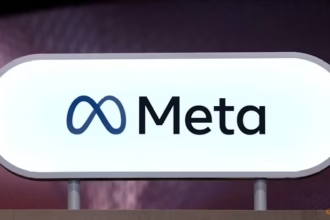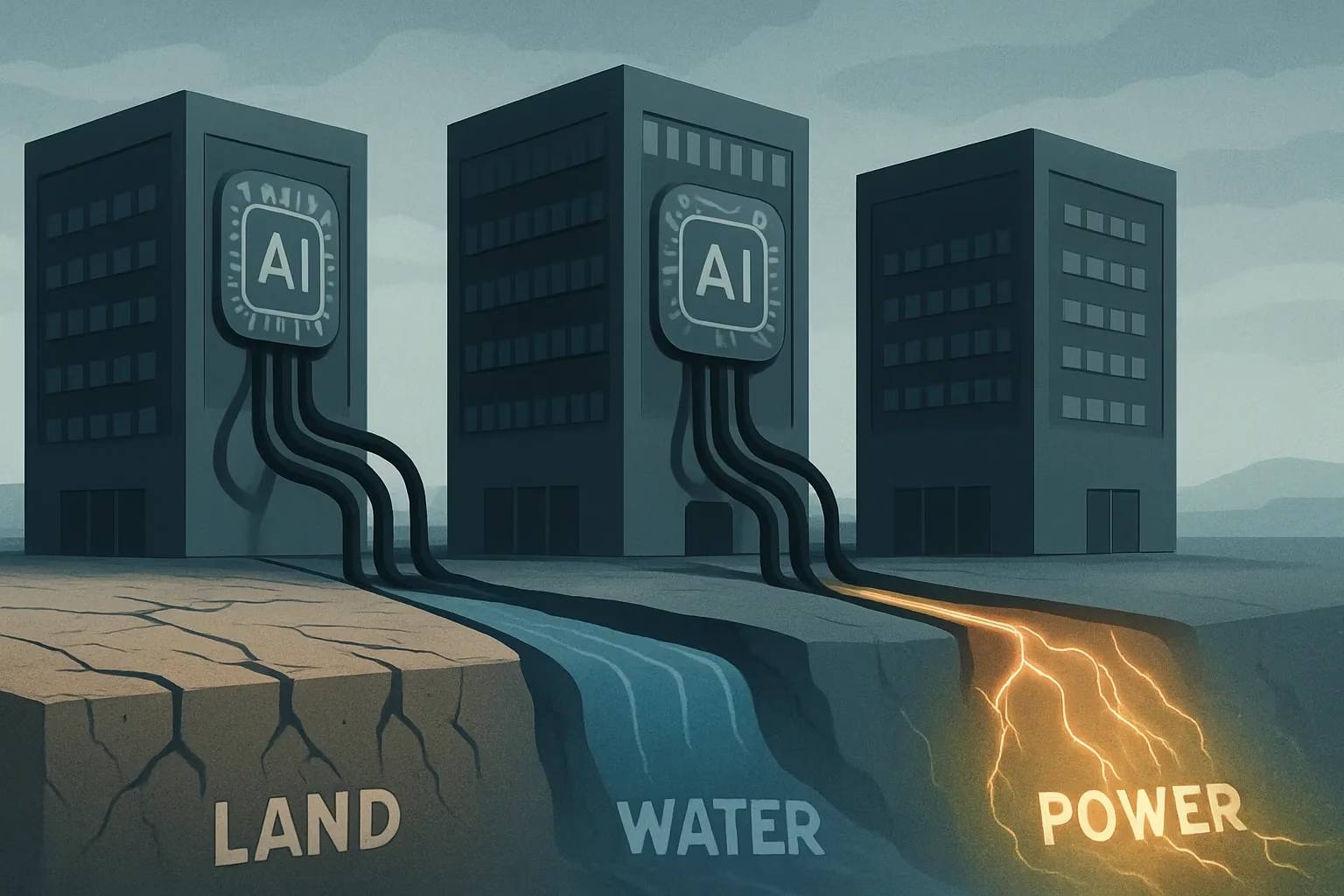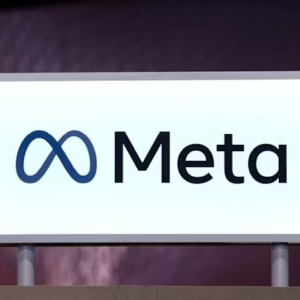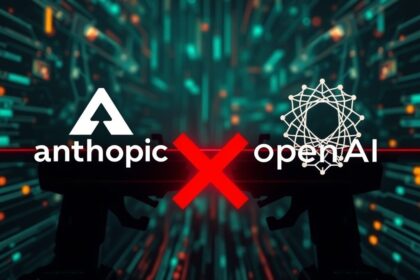From the outside, a data center in Piscataway, New Jersey, looks like any corporate office building. But step inside, and the hum of thousands of servers fills the air. Rows of server racks glow with blinking lights, cooled by powerful airflow systems. This facility can support up to 3 megawatts of power — enough to supply roughly 3,000 homes.
This is just one of over 5,000 data centers across the United States. But a new wave of construction is transforming the landscape — driven by the explosive growth of artificial intelligence (AI).
Facilities once measured in hundreds of megawatts are now being planned at gigawatt scale, consuming as much electricity as small cities. As these AI “factories” rise on farmland and suburban lots, they bring with them profound questions about the cost to land, water, and power grids — and to the communities that host them.
🌐 The AI Data Center Boom
The launch of generative AI tools like ChatGPT in 2022 triggered a technological surge. Within months, AI became embedded in everyday life — from banking and education to healthcare and entertainment.
Tech companies are now investing tens of billions of dollars to build the infrastructure to support this growth. Meta plans to spend $10 billion on its Hyperion data center in Louisiana — a 4-million-square-foot facility expected to open by 2030. The site will span 2,250 acres, equivalent to a large portion of Manhattan.
Even more ambitious is the Stargate Project, a newly formed initiative backed by major technology and investment firms, which has pledged $500 billion over four years to develop AI infrastructure. One of its first major sites, under construction in Abilene, Texas, covers 875 acres and is expected to require 1.2 gigawatts of electricity — enough to power 750,000 homes.
According to BloombergNEF, four major companies — Amazon Web Services, Google, Meta, and Microsoft — control 42% of U.S. data center capacity. Microsoft alone invested more than $80 billion in AI infrastructure during its most recent fiscal year.
⚡ Energy: Straining an Aging Grid
AI workloads are far more energy-intensive than traditional computing. A single AI query uses about 10 times more energy than a standard search engine query. With billions of AI interactions daily, the strain on the national power grid is intensifying.
The U.S. Department of Energy reports that AI data centers are now a key driver of electricity demand growth. From 2021 to 2024, the number of U.S. data centers nearly doubled. The National Telecommunications and Information Administration (NTIA) projects that demand will grow by 9% annually through 2030.
By 2035, data centers could consume twice as much electricity as they do today.
💡 Reality Check: The U.S. power grid, largely built in the 1960s and 1970s, was not designed for this level of demand.
The North American Electric Reliability Corporation (NERC) warns that the rapid rise of large-scale data centers is reducing system stability. In 2023, the national grid could handle about 1,189 gigawatts of power. Now, single data centers like Meta’s Hyperion are requesting 2 gigawatts — a demand 30 times greater than smaller facilities.
John Moura, NERC’s director of reliability assessment, notes: “We’re now seeing interconnection requests for 1, 2, even 5 gigawatts. That changes the fundamentals of how the grid is planned.”
Utilities are legally required to meet the energy needs of approved data centers — even if it means costly upgrades. These costs often get passed on to consumers.
A 2024 study by Carnegie Mellon University and North Carolina State University projects that data center growth could increase average U.S. electricity rates by 8% by 2030, with spikes exceeding 25% in high-density areas like Northern Virginia.
💧 Water: A Hidden Environmental Cost
Data centers generate immense heat and require constant cooling — often achieved through evaporative cooling systems that consume millions of gallons of water annually.
In 2021, a Google data center in The Dalles, Oregon, used 355 million gallons — equivalent to over 500 Olympic-sized swimming pools. In Council Bluffs, Iowa, Google’s two data centers consumed 1.4 billion gallons in 2024 alone.
Meta reported withdrawing 1.39 billion gallons globally in 2023, with nearly half permanently removed from local watersheds. Much of this water evaporates during cooling; the rest is discharged, sometimes carrying contaminants into municipal wastewater systems.
Communities are sounding the alarm. In Clifton Township, Pennsylvania, residents are opposing a proposed 1.5-gigawatt data center campus that would draw water from shared aquifers. June Ejk, a retired school principal and community organizer, warns: “If 34 more wells are drilled, we risk draining the aquifer. And then what do people do?”
Similar concerns have emerged in Georgia, where residents near a Meta data center reported well depletion after construction began.
🏘️ Land and Community Impact
AI data centers are being built on former farmland, rural towns, and suburban neighborhoods. Meta’s Louisiana project will convert 2,250 acres of farmland into a high-tech campus — land that will never be farmed again.
Proponents argue these projects bring jobs and tax revenue. Louisiana Economic Development estimates Meta’s Hyperion project will create:
- 500 permanent jobs
- 1,000 indirect jobs
- Up to 5,000 temporary construction jobs
However, critics question the long-term benefits. Julie Richmond Sauer, a nurse in central Louisiana, says: “They’ve only sold the positives — jobs, industry, progress — but not told the public about the negatives.”
Moreover, many construction jobs may go to out-of-state workers, and long-term employment remains limited. The promise of economic development often comes at the cost of lost agricultural land, environmental strain, and community displacement.
💰 Tax Incentives: Who Pays the Bill?
Over 20 states offer tax incentives to attract data centers, including exemptions on sales taxes for equipment and construction materials. While these deals aim to boost local economies, they often shift financial burdens onto taxpayers.
According to the Frontier Group, these tax breaks reduce public revenue without guaranteeing long-term community benefits. In Virginia’s “Data Center Alley” (Ashburn), over 500 data centers operate — but rising energy costs and strained infrastructure are now major concerns.
🌱 Climate Promises vs. Reality
Despite their environmental footprint, major tech companies have made strong climate commitments:
- Google aims for net-zero carbon emissions by 2030
- Amazon targets net-zero by 2040
- Meta pledges to use 100% renewable energy and restore more water than it consumes
However, progress is uneven. Google’s 2025 Environmental Report reveals a 51% increase in carbon emissions since 2019, driven largely by data center expansion.
Senator Sheldon Whitehouse (D-RI) has questioned Meta’s climate pledges, calling them “vague” and warning that the company may be prioritizing data center development over environmental safety.
🔧 Innovations and Alternatives
Some companies are adopting more sustainable practices:
- DataBank and Microsoft are transitioning to closed-loop cooling systems that recycle water.
- LED lighting, airflow optimization, and alternative fuels (like hydro-treated vegetable oil) are reducing emissions.
- The Electric Power Research Institute’s DCFlex initiative, supported by Meta and Google, promotes “flexible” data centers that reduce energy use during peak demand.
Nuclear energy is also gaining interest. Meta plans to begin using nuclear power by 2027, while Amazon and Google are exploring small modular reactors for the 2030s — though large-scale deployment remains years away.
📍 Is a Data Center Coming to Your Town?
There is at least one data center in every U.S. state. Tech companies seek locations with:
- Stable climates
- Access to water
- Available land
- Potential for carbon-free energy
If your community meets these criteria, a data center could be on the horizon.
✅ Summary: Key Facts
| Category | Key Fact |
|---|---|
| Power Demand | A single AI query uses 10x more energy than a Google search |
| Electricity Use | U.S. data centers could double their demand by 2035 |
| Water Consumption | Google’s Iowa data centers used 1.4 billion gallons in 2024 |
| Largest Projects | Meta’s Hyperion (2 GW), Stargate Texas (1.2 GW) |
| Job Promises | 500–1,000 permanent jobs; most construction jobs are temporary |
| Tax Incentives | Over 20 states offer breaks — costs often shift to taxpayers |
| Grid Strain | Utilities must supply power — even if it raises rates for everyone |
| Carbon Emissions | Google’s emissions rose 51% from 2019 to 2024 |
🔗 Verified Official Sources
- U.S. Department of Energy: energy.gov
- North American Electric Reliability Corporation (NERC): nerc.com
- Environmental Protection Agency (EPA): epa.gov
- U.S. Energy Information Administration (EIA): eia.gov
- National Telecommunications and Information Administration (NTIA): ntia.gov






















Best writing and the situation is alarming